Energy Storage
Brian Cashion
Energy Storage
Accure Battery Intelligence
Energy Storage
Jim Brown
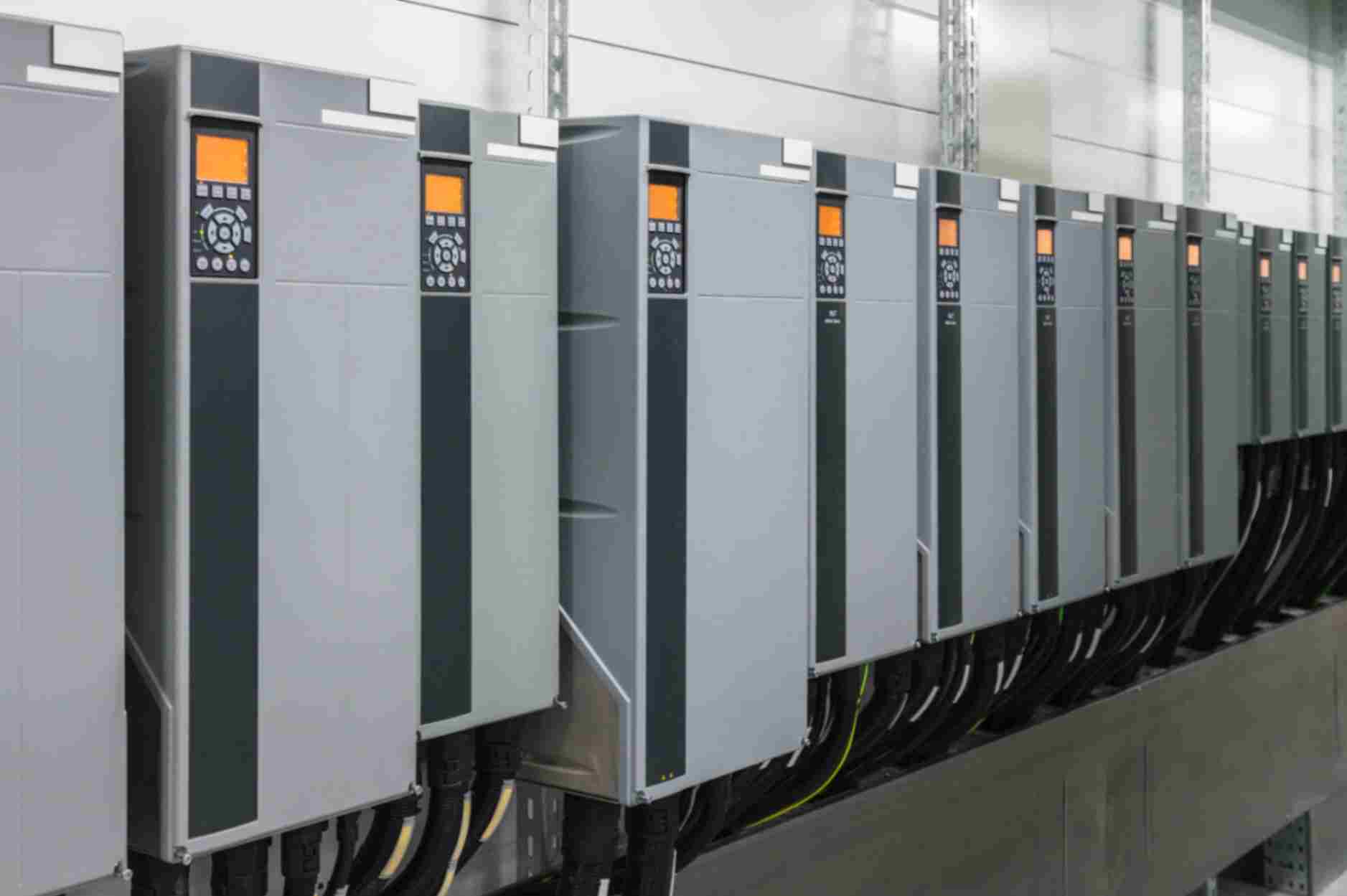
NeoVolta Inc., a San-Diego based leader in smart energy storage solutions, announces that Ardes Johnson, CEO of NeoVolta, Inc. was called as an expert witness to testify and advise the U.S. International Trade Commission in Washington, D.C. on protecting U.S. manufacturing against unfair trade practices, particularly in the renewable energy space.
The USITC is mandated by congress with broad investigative responsibilities on matters of trade. The agency investigates the effects of dumped and subsidized imports on domestic industries and conducts global safeguard investigations.
The Commission also adjudicates cases involving imports that allegedly infringe intellectual property rights. Through such proceedings, the agency facilitates a rules-based international trading system. His testimony will help promote advantageous US policy for companies like NeoVolta to develop product and manufacturing capabilities within the Country.
For more than a decade, Mr. Johnson has been considered an expert in renewable energy and is frequently called upon to represent the industry in the field of manufacturing and supply chain security. Johnson joined NeoVolta from Meyer Burger Americas, where, as President and General Manager, he spearheaded the company’s expansion in the Americas, achieving a multi-gigawatt backlog of over $1 billion dollars and is scaling to 2 gigawatts per year of manufacturing in just 18 months.
Prior to Meyer Burger, Johnson served as Director of Americas Sales and Marketing for Tesla’s Energy Products division. Johnson was instrumental in the development and success of Tesla’s energy storage solutions, where he launched the partner channel program for the PowerWall and PowerPack products in the Utility, Residential and Commercial Markets. His leadership helped secure a landmark 80 MWh storage contract with Southern California Edison.
Johnson, a U.S. Navy Veteran said: “Our goal is to position NeoVolta as a premier U.S. based manufacturer. Our strategy is to ensure that there is a level playing field in energy storage. Yes we have a global supply chain strategy, but we also understand the criticality of ensuring sustainable solutions that are created through jobs right here in the U.S.”
NeoVolta I www.neovolta.com

Vikram Solar, a frontrunner in India's solar module manufacturing, has secured a landmark 397.7 MWp module supply order for NTPC Renewable Energy Limited.
Vikram Solar's modules will power a significant portion of the massive 1,255 MW Khavda Solar Project in Gujarat. These cutting-edge bifacial DCR modules boast a minimum capacity of 540 Wp and meet the stringent ALMM standards.
This partnership not only propels India's solar energy ambitions but also underscores Vikram Solar's unwavering commitment to sustainability through high-performance solutions. The project aligns perfectly with the Domestic Content Requirement (DCR), further solidifying the company's dedication to bolstering India's domestic solar manufacturing capabilities.
Commenting on the notable achievement, Mr. Gyanesh Chaudhary, Chairman & Managing Director of Vikram Solar, remarked, “This landmark order is a powerful testament to the enduring partnership between Vikram Solar and NTPC Renewable Energy Limited. Our successful execution of numerous solar projects for NTPC has fostered a deep trust, built on a shared commitment to excellence. As a pioneer leading India's solar revolution, Vikram Solar remains unwavering in its pursuit of innovation and quality, always prioritizing our customers' needs. This collaboration not only cements our industry leadership but also aligns perfectly with our vision to propel India towards a clean energy future. We look forward to making substantial contributions to the renewable energy sector, helping India become a global leader in sustainable practices”.
Vikram Solar takes the helm of manufacturing high-efficiency solar modules critical to the Khavda Solar Project's success.
Vikram Solar | www.vikramsolar.com

Following the historic outcome of the first Global Stocktake to triple global renewable energy capacity and double energy efficiency by 2030, the COP28 Presidency has designated the International Renewable Energy Agency (IRENA) as the official custodian of an annual report series tracking global progress toward these key targets. Building on the Agency’s strong existing collaboration with the Global Renewables Alliance (GRA), IRENA has invited GRA to contribute to this reporting process by providing input and support as the exclusive private sector partner to the series.
The report will be led by IRENA and published annually from 2024 until 2030, providing the latest monitoring data and projections each year in relation to these defining targets of the UAE Consensus established at COP28, and serving as a key input to future COP engagements.
“Inspired by the projections of IRENA’s 1.5°C Scenario, the call at COP28 to triple renewables and double energy efficiency by 2030 represents an unprecedented step forward in our efforts to keep the Paris Agreement goals within reach. Collaboration with the private sector is essential to this endeavour, and the Global Renewables Alliance is ideally positioned to support IRENA in tracking global progress towards these historic goals as the exclusive private sector partner”, said Francesco La Camera, Director-General of IRENA.
“We are delighted to be working with IRENA on their annual report to track the tripling of renewables to 2030. With industry data from GRA members, combined with the data from IRENA, we will monitor the progress towards 2030. This public-private collaboration will help accelerate and facilitate the scaling of renewable energy, and encourage the urgent actions required in this essential decade,” said Bruce Douglas, CEO of GRA.
Complementing the tracking report, IRENA and GRA will also collaborate ahead of COP29 on the Global Renewables Summit. The event represents the first high-level summit bringing together the public and private sectors to discuss the progress, challenges and opportunities of reaching 11,000 GW of installed renewable capacity by 2030. The Summit, which will take place during Climate Week NYC, will serve as a platform to follow up on the outcomes of COP28 and identify key areas of action to deliver progress in the tripling of renewables, with a focus on emerging markets and developing economies (EMDEs).
IRENA and GRA will also host a joint Global Renewables Hub at COP29, creating a space for industry leaders, government officials and representatives from civil society to discuss key strategic aspects of the clean energy transition.
IRENA | www.irena.org
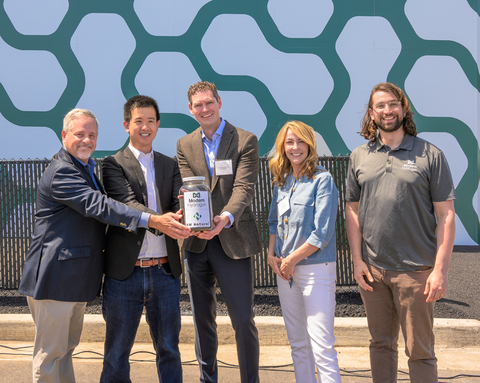
NW Natural and Modern Hydrogen welcomed more than 100 guests and employees to an official unveiling of a new project that is producing clean hydrogen while capturing solid carbon.
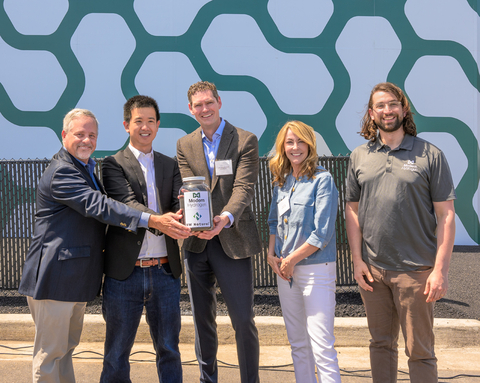
Equipment designed by Modern Hydrogen and installed at NW Natural’s Central Resource Center in southeast Portland uses a process called methane pyrolysis.
Solid carbon being captured from this process is collected and incorporated into Modern Hydrogen’s proprietary, performance-enhancing asphalt products. These are used in applications such as paving and road repair projects—including a section of asphalt surrounding the equipment installation at NW Natural’s facility.
Hydrogen generated on site is blended with natural gas and delivered via existing energy infrastructure.
“Over the years we have held to our core values of safety and service, while embracing new technologies and better ways of doing things,” said NW Natural CEO David Anderson. “Today we’re looking to renewable natural gas, clean hydrogen, carbon capture and other ways to decarbonize our system. People are eager for solutions that can be put into action today, and we’re proud to play our part.”
“We are proud to stand at the forefront of this transformative journey, pushing the boundaries of what's possible in energy production and environmental stewardship,” said Modern Hydrogen Co-Founder and CEO Tony Pan. “Together, we are not just witnessing, but actively participating in history with the launch of innovative systems that revolutionize hydrogen production, leverage existing infrastructure for a cleaner future, capture and repurpose carbon, and significantly reduce the carbon footprint of gas utilities.”
Modern Hydrogen’s Tony Pan cited several landmark firsts being achieved through this utility partnership, including the first utility distributed pyrolysis system, the first pipeline injection of pyrolytic hydrogen, and the first solid carbon capture project for both companies.
NW Natural’s David Anderson credited the Modern Hydrogen and NW Natural project teams as well as workers represented by local unions and contractors in getting the project up-and-running.
This three-year pilot project is the latest effort by NW Natural to explore potential hydrogen applications. This includes extensive testing at our Sherwood Operations and Training facility, demonstrating the safety and performance of hydrogen blends ranging from 5 to 20 percent in natural gas systems and equipment.
NW Natural is working to reduce greenhouse gas emissions on multiple fronts, reimagining the role of the natural gas system and the fuel that we deliver. This includes pursuing a combination of decarbonization measures that include energy efficiency, renewable energy, carbon offsets, and carbon capture. Replacing conventional natural gas over time with alternatives like renewable natural gas and clean hydrogen is central to achieving that vision.
NW Natural | https://www.nwnatural.com/
Modern Hydrogen | www.modernhydrogen.com

Sunrun (Nasdaq: RUN), the nation’s leading provider of clean energy as a subscription service, released its 2023 Impact Report. The report details the company's progress toward its impact goals, social and environmental initiatives, as well as advancements in safety, employee experience, and governance. It also highlights Sunun’s commitment to generating long-term, sustainable value for all of its stakeholders, including customers, employees, communities, and shareholders.
“Our achievements over the past year reflect the passion and commitment of our teams in the critical work we undertake daily to build a sustainable, clean-energy future that benefits everyone,” said Sunrun CEO Mary Powell. “Our annual report underscores our strong commitment to environmental stewardship and operating responsibility. It inspires us to continually improve our operations, empower our employees, support our communities, deliver value for our shareholders, and provide unparalleled service to our customers as we connect people to the cleanest energy on earth.”
Since 2007, Sunrun solar energy systems have generated 32.4 billion kilowatt-hours of solar energy, helping to enable the avoidance of an estimated 18 million metric tons of carbon dioxide emissions — the equivalent of taking 4.3 million gasoline-powered vehicles off the roads or 48 gas-fired power plants offline for a year. Additionally, Sunrun has provided its customers with over $1.3 billion in energy savings and approximately 2.8 million hours of backup power over 659,000 grid outage events.
Notable 2023 Sunrun impact highlights include:
Mitigating the Impacts of Climate Change
Building a Safe, Diverse, Fair, and Equitable Workforce
Improving Energy Equity and Environmental Justice
Company Recognition
Discover more by visiting Sunrun’s 2023 Impact Report.
Sunrun | www.sunrun.com
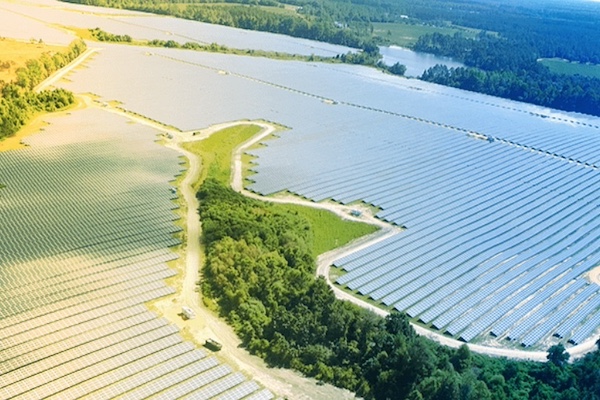
The United States has officially exceeded five million solar installations, marking a significant achievement in the nation's clean energy transition. This milestone comes just eight years after the U.S. reached one million installations in 2016 — a milestone that took 40 years to achieve following the first grid-connected solar installation in 1973.
According to data just released by the Solar Energy Industries Association (SEIA) and Wood Mackenzie, over half of all U.S. solar installations have come online since the start of 2020 and over 25% have come online since the Inflation Reduction Act became law just 20 months ago. These systems are installed on homes, businesses, and in large ground-mounted arrays across the country.
“Solar is scaling by the millions because it consistently delivers on its promise to lower electricity costs, boost community resilience, and create economic opportunities,” said SEIA president and CEO Abigail Ross Hopper. “Today 7% of homes in America have solar, and this number will grow to over 15% of U.S. homes by 2030. Solar is quickly becoming the dominant source of electricity on the grid, allowing communities to breathe cleaner air and lead healthier lives.”
Despite state policy changes, market trends continue to suggest significant growth in states across the country. SEIA forecasts that solar installations in the U.S. will double to 10 million by 2030 and triple to 15 million by 2034.
The residential sector accounts for 97% of all solar installations in the U.S. This sector has set annual installation records for five consecutive years and 10 of the last 12 years. Residential solar is growing at a historic rate because it is a proven investment for homeowners looking to take control of their energy costs.
Today, 11 U.S. states and territories have over 100,000 systems installed.
California leads the nation with 2 million solar installations, but recent policy decisions in the state have harmed the rooftop solar market. Several other states are seeing rapid growth. Illinois was an emerging market with only 2,500 solar installations in 2017, and today, the state is home to more than 87,000 solar systems. Florida is another market experiencing substantial growth, increasing from 22,000 installations in 2017 to 235,000 installations today.
By 2030, 22 states or territories are expected to exceed 100,000 solar installations.
The U.S. now has enough solar installations to cover every residential rooftop in the four corners states of Colorado, Utah, Arizona, and New Mexico.
Learn more about the economic and environmental impact of America’s 5 million solar installations.
Solar Energy Industries Association | www.seia.org

The Maryland Energy Administration announced the launch of an important new program to provide major incentives for income-eligible Maryland households to install solar panels. Contained in the Brighter Tomorrow Act of 2024 recently signed by Governor Wes Moore, the new Maryland Solar Access program will boost solar development in the state and make it easier for more Marylanders to reduce both their energy bills and carbon footprints.
The Maryland Solar Access program will provide up to $7,500 per eligible household, based on an incentive of $750 per installed kilowatt hour of direct current solar capacity. The levels of the individual incentive and overall investment align closely with the recommendations of the 2023 Maryland Task Force to Study Solar Incentives.
“The Maryland Solar Access program will help hard-working Marylanders and their families enjoy the cost and societal benefits of solar power. Solar is affordable, clean and vital in helping us meet our energy and climate goals under the Climate Solutions Now Act,” said Maryland Energy Administration Director Paul G. Pinsky. “By providing a significant incentive to those Marylanders who need it most, the Maryland Solar Access program will connect people with solar’s cost savings who most likely would never otherwise get it.”
Maryland Solar Access program grants will be reserved by eligible applicants on a first-come, first-served basis. Solar systems that are purchased or owned by third parties will qualify. The agency will provide full information on eligibility requirements, rules and restrictions in a Funding Opportunity Announcement later this year.
In the meantime, interested parties are encouraged to visit the Maryland Energy Administration’s Maryland Solar Access program webpage to review the Notice of Intent and Request for Information. There they can respond to a set of questions to help the agency maximize the program’s impact and inform the design of the program. Responses are due by 3:00 P.M. ET, June 30, 2024.
The Solar Access program will succeed the agency’s long-running Residential Clean Energy Rebate Program, which will be offered for a final time from July 1 to November 30, or until funding is depleted. For more information, please visit this webpage.
The Maryland Energy Administration also welcomed other components of the Brighter Tomorrow Act, such as a measure promoting standardized residential solar permitting via automated online software, including the Solar Automated Permit Processing Plus, or SolarAPP+. The National Renewable Energy Laboratory developed this innovative technology, for which the Maryland Energy Administration will make available grant funding to local governments through a new federally funded pilot program.
“Simplifying and streamlining ‘going solar’ through SolarAPP+ will help Maryland communities speed up permitting times,” said Director Pinsky. “The Maryland Energy Administration looks forward to collaborating with our local government colleagues to assist them to deliver an efficient and equitable process for every Marylander, so that the clean energy transition leaves no one behind.”
Maryland Energy Administration | https://news.maryland.gov/mea/

Alternative Energies Jun 26, 2023
Unleashing trillions of dollars for a resilient energy future is within our grasp — if we can successfully navigate investment risk and project uncertainties. The money is there — so where are the projects? A cleaner and more secure energy ....
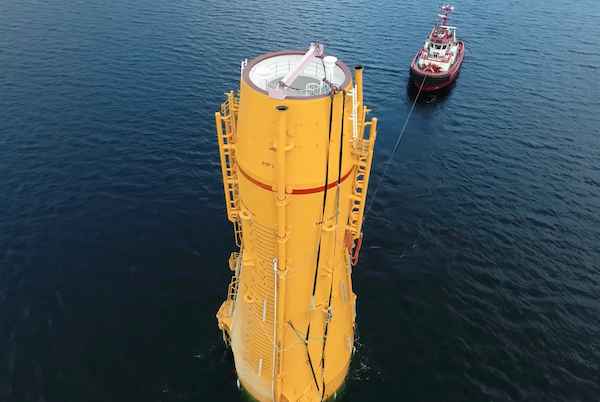
The Kincardine floating wind farm, located off the east coast of Scotland, was a landmark development: the first commercial-scale project of its kind in the UK sector. Therefore, it has been closely watched by the industry throughout its installation. With two of the turbines now having gone through heavy maintenance, it has also provided valuable lessons into the O&M processes of floating wind projects.
In late May, the second floating wind turbine from the five-turbine development arrived in the port of Massvlakte, Rotterdam, for maintenance. An Anchor Handling Tug Supply (AHTS)
vessel was used to deliver the KIN-02 turbine two weeks after a Platform Supply Vessel (PSV) and AHTS had worked to disconnect the turbine from the wind farm site. The towing vessel became the third vessel used in the operation.
This is not the first turbine disconnected from the site and towed for maintenance. In the summer of 2022, KIN-03 became the world’s first-ever floating wind turbine that required heavy maintenance (i.e. being disconnected and towed for repair). It was also towed from Scotland to Massvlakte.
Each of these operations has provided valuable lessons for the ever-watchful industry in how to navigate the complexities of heavy maintenance in floating wind as the market segment grows.

The heavy maintenance process
When one of Kincardine’s five floating 9.5 MW turbines (KIN-03) suffered a technical failure in May 2022, a major technical component needed to be replaced. The heavy maintenance strategy selected by the developer and the offshore contractors consisted in disconnecting and towing the turbine and its floater to Rotterdam for maintenance, followed by a return tow and re-connection. All of the infrastructure, such as crane and tower access, remained at the quay following the construction phase. (Note, the following analysis only covers KIN-03, as details of the second turbine operation are not yet available).
Comparing the net vessel days for both the maintenance and the installation campaigns at this project highlights how using a dedicated marine spread can positively impact operations.
For this first-ever operation, a total of 17.2 net vessel days were required during turbine reconnection—only a slight increase on the 14.6 net vessel days that were required for the first hook-up operation performed during the initial installation in 2021. However, it exceeds the average of eight net vessel days during installation. The marine spread used in the heavy maintenance operation differed from that used during installation. Due to this, it did not benefit from the learning curve and experience gained throughout the initial installation, which ultimately led to the lower average vessel days.
The array cable re-connection operation encountered a similar effect. The process was performed by one AHTS that spent 10 net vessel days on the operation. This compares to the installation campaign, where the array cable second-end pull-in lasted a maximum of 23.7 hours using a cable layer.
Overall, the turbine shutdown duration can be broken up as 14 days at the quay for maintenance, 52 days from turbine disconnection to turbine reconnection, and 94 days from disconnection to the end of post-reconnection activities.
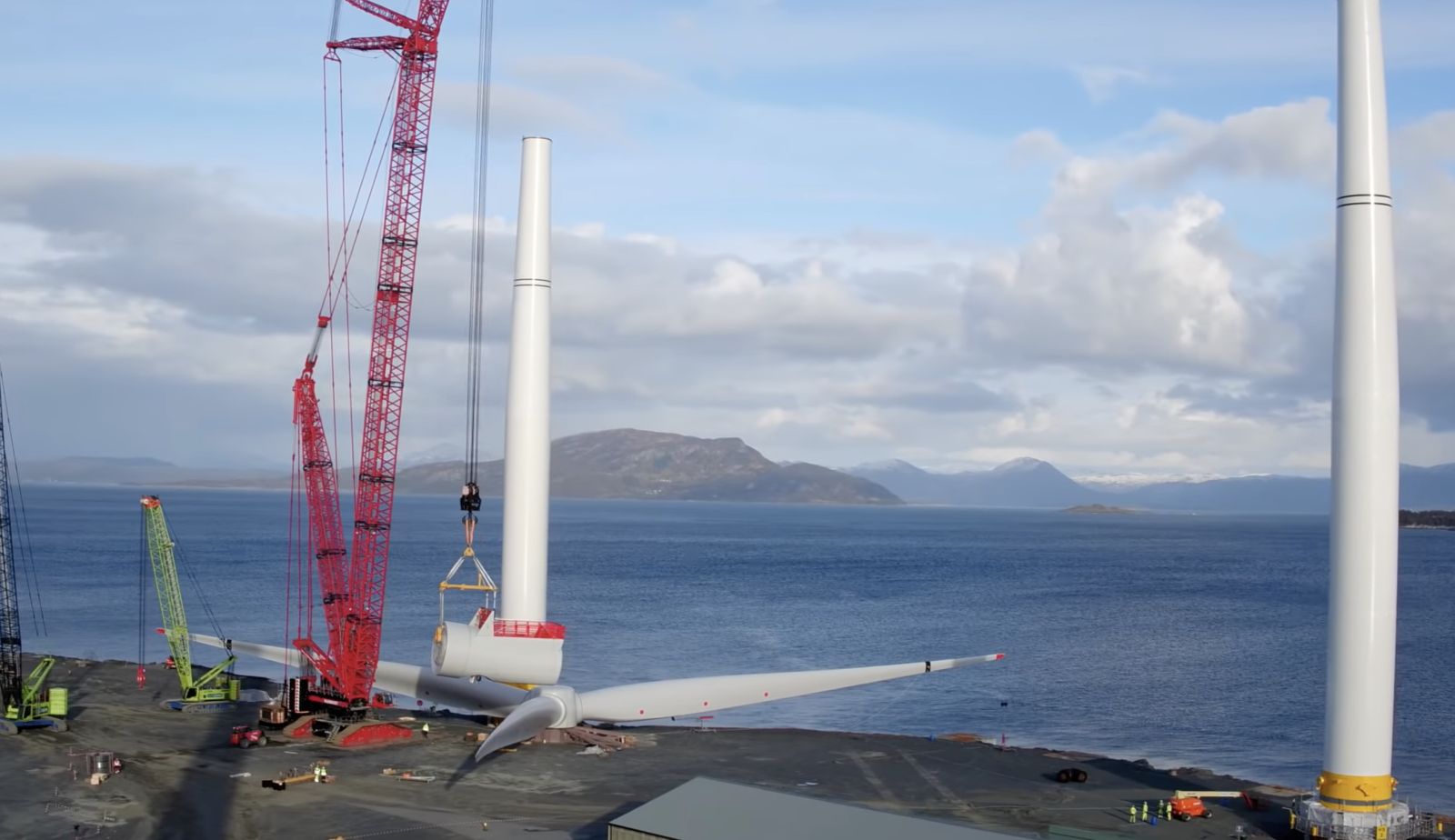
What developers should keep in mind for heavy maintenance operations
This analysis has uncovered two main lessons developers should consider when planning a floating wind project: the need to identify an appropriate O&M port, and to guarantee that a secure fleet is available.
Floating wind O&M operations require a port with both sufficient room and a deep-water quay. The port must also be equipped with a heavy crane with sufficient tip height to accommodate large floaters and reach turbine elevation. Distance to the wind farm should also be taken into account, as shorter distances will reduce towing time and, therefore, minimize transit and non-productive turbine time.
During the heavy maintenance period for KIN-03 and KIN-02, the selected quay (which had also been utilized in the initial installation phase of the wind farm project), was already busy as a marshalling area for other North Sea projects. This complicated the schedule significantly, as the availability of the quay and its facilities had to be navigated alongside these other projects. This highlights the importance of abundant quay availability both for installation (long-term planning) and maintenance that may be needed on short notice.
At the time of the first turbine’s maintenance program (June 2022), the North Sea AHTS market was in an exceptional situation: the largest bollard pull AHTS units contracted at over $200,000 a day, the highest rate in over a decade.
During this time, the spot market was close to selling out due to medium-term commitments, alongside the demand for high bollard pull vessels for the installation phase at a Norwegian floating wind farm project. The Norwegian project required the use of four AHTS above a 200t bollard pull. With spot rates ranging from $63,000 to $210,000 for the vessels contracted for Kincardine’s maintenance, the total cost of the marine spread used in the first repair campaign was more than $4 million.
Developers should therefore consider the need to structure maintenance contracts with AHTS companies, either through frame agreements or long-term charters, to decrease their exposure to spot market day rates as the market tightens in the future.

While these lessons are relevant for floating wind developers now, new players are looking towards alternative heavy O&M maintenance options for the future. Two crane concepts are especially relevant in this instance. The first method is for a crane to be included in the turbine nacelle to be able to directly lift the component which requires repair from the floater, as is currently seen on onshore turbines. This method is already employed in onshore turbines and could be applicable for offshore. The second method is self-elevating cranes with several such solutions already in development.
The heavy maintenance operations conducted on floating turbines at the Kincardine wind farm have provided invaluable insights for industry players, especially developers. The complex process of disconnecting and towing turbines for repairs highlights the need for meticulous planning and exploration of alternative maintenance strategies, some of which are already in the pipeline. As the industry evolves, careful consideration of ports, and securing fleet contracts, will be crucial in driving efficient and cost-effective O&M practices for the floating wind market.
Sarah McLean is Market Research Analyst at Spinergie, a maritime technology company specializing in emission, vessel performance, and operation optimization.
Spinergie | www.spinergie.com

According to the Energy Information Administration (EIA), developers plan to add 54.5 gigawatts (GW) of new utility-scale electric generating capacity to the U.S. power grid in 2023. More than half of this capacity will be solar. Wind power and battery storage are expected to account for roughly 11 percent and 17 percent, respectively.
A large percentage of new installations are being developed in areas that are prone to extreme weather events and natural disasters (e.g., Texas and California), including high wind, tornadoes, hail, flooding, earthquakes, wildfires, etc. With the frequency and severity of many of these events increasing, project developers, asset owners, and tax equity partners are under growing pressure to better understand and mitigate risk.
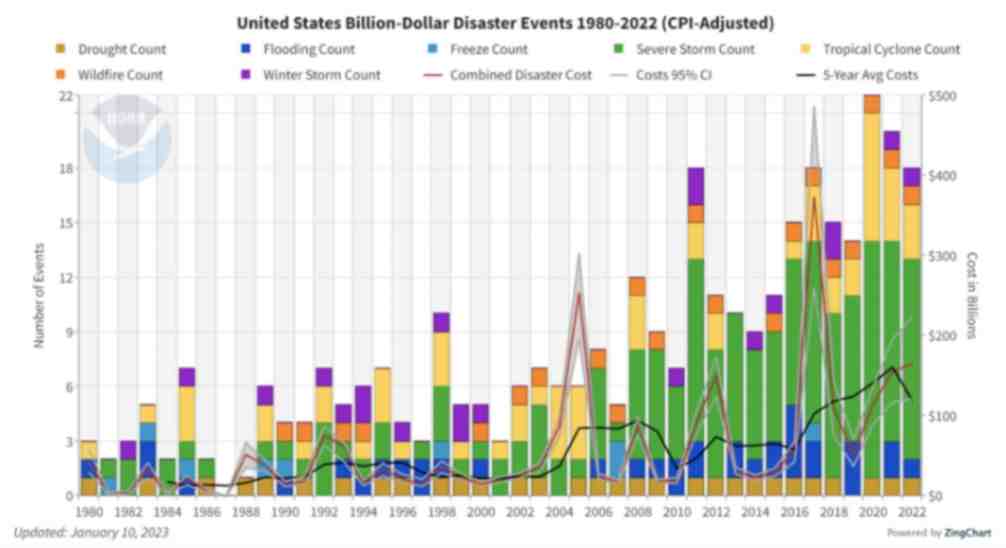
Figure 1. The history of billion-dollar disasters in the United States each year from 1980 to 2022 (source: NOAA)
In terms of loss prevention, a Catastrophe (CAT) Modeling Study is the first step to understanding the exposure and potential financial loss from natural hazards or extreme weather events. CAT studies form the foundation for wider risk management strategies, and have significant implications for insurance costs and coverage.
Despite their importance, developers often view these studies as little more than a formality required for project financing. As a result, they are often conducted late in the development cycle, typically after a site has been selected. However, a strong case can be made for engaging early with an independent third party to perform a more rigorous site-specific technical assessment. Doing so can provide several advantages over traditional assessments conducted by insurance brokerage affiliates, who may not possess the specialty expertise or technical understanding needed to properly apply models or interpret the results they generate. One notable advantage of early-stage catastrophe studies is to help ensure that the range of insurance costs, which can vary from year to year with market forces, are adequately incorporated into the project financial projections.
The evolving threat of natural disasters
Over the past decade, the financial impact of natural hazard events globally has been almost three trillion dollars. In the U.S. alone, the 10-year average annual cost of natural disaster events exceeding $1 billion increased more than fourfold between the 1980s ($18.4 billion) and the 2010s ($84.5 billion).

Investors, insurers, and financiers of renewable projects have taken notice of this trend, and are subsequently adapting their behavior and standards accordingly. In the solar market, for example, insurance premiums increased roughly four-fold from 2019 to 2021. The impetus for this increase can largely be traced back to a severe storm in Texas in 2019, which resulted in an $80 million loss on 13,000 solar panels that were damaged by hail.
The event awakened the industry to the hazards severe storms present, particularly when it comes to large-scale solar arrays. Since then, the impact of convective weather on existing and planned installations has been more thoroughly evaluated during the underwriting process. However, far less attention has been given to the potential for other natural disasters; events like floods and earthquakes have not yet resulted in large losses and/or claims on renewable projects (including wind farms). The extraordinary and widespread effect of the recent Canadian wildfires may alter this behavior moving forward.
A thorough assessment, starting with a CAT study, is key to quantifying the probability of their occurrence — and estimating potential losses — so that appropriate measures can be taken to mitigate risk.
All models are not created equal
Industrywide, certain misconceptions persist around the use of CAT models to estimate losses from an extreme weather event or natural disaster.
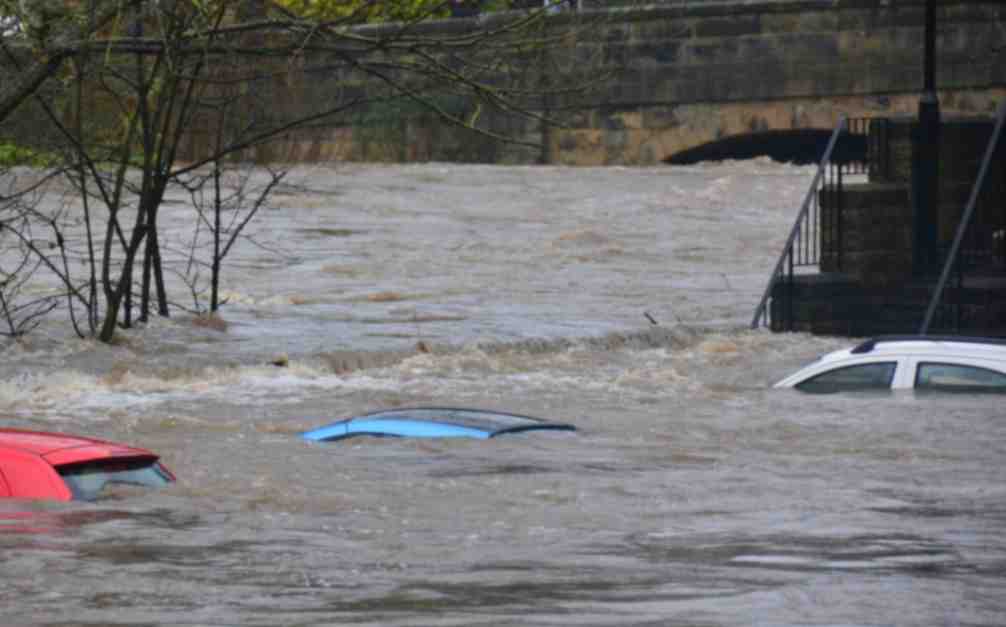
Often, the perception is that risk assessors only need a handful of model inputs to arrive at an accurate figure, with the geographic location being the most important variable. While it’s true that many practitioners running models will pre-specify certain project characteristics regardless of the asset’s design (for example, the use of steel moment frames without trackers for all solar arrays in a given region or state), failure to account for even minor details can lead to loss estimates that are off by multiple orders of magnitude.
The evaluation process has recently become even more complex with the addition of battery energy storage. Relative to standalone solar and wind farms, very little real-world experience and data on the impact of extreme weather events has been accrued on these large-scale storage installations. Such projects require an even greater level of granularity to help ensure that all risks are identified and addressed.
Even when the most advanced modeling software tools are used (which allow for thousands of lines of inputs), there is still a great deal that is subject to interpretation. If the practitioner does not possess the expertise or technical ability needed to understand the model, the margin for error can increase substantially. Ultimately, this can lead to overpaying for insurance. Worse, you may end up with a policy with insufficient coverage. In both cases, the profitability of the asset is impacted.
Supplementing CAT studies
In certain instances, it may be necessary to supplement CAT models with an even more detailed analysis of the individual property, equipment, policies, and procedures. In this way, an unbundled risk assessment can be developed that is tailored to the project. Supplemental information (site-specific wind speed studies and hydrological studies, structural assessment, flood maps, etc.) can be considered to adjust vulnerability models.
This provides an added layer of assurance that goes beyond the pre-defined asset descriptions in the software used by traditional studies or assessments. By leveraging expert elicitations, onsite investigations, and rigorous engineering-based methods, it is possible to discretely evaluate asset-specific components as part of the typical financial loss estimate study: this includes Normal Expected Loss (NEL), also known as Scenario Expected Loss (SEL); Probable Maximum Loss (PML), also known as Scenario Upper Loss (SUL); and Probabilistic Loss (PL).
Understanding the specific vulnerabilities and consequences can afford project stakeholders unique insights into quantifying and prioritizing risks, as well as identifying proper mitigation recommendations.
Every project is unique
The increasing frequency and severity of natural disasters and extreme weather events globally is placing an added burden on the renewable industry, especially when it comes to project risk assessment and mitigation. Insurers have signaled that insurance may no longer be the main basis for transferring risk; traditional risk management, as well as site and technology selection, must be considered by developers, purchasers, and financiers.
As one of the first steps in understanding exposure and the potential capital loss from a given event, CAT studies are becoming an increasingly important piece of the risk management puzzle. Developers should treat them as such by engaging early in the project lifecycle with an independent third-party practitioner with the specialty knowledge, tools, and expertise to properly interpret models and quantify risk.
Hazards and potential losses can vary significantly depending on the project design and the specific location. Every asset should be evaluated rigorously and thoroughly to minimize the margin for error, and maximize profitability over its life.
 Chris LeBoeuf is Global Head of the Extreme Loads and Structural Risk division of ABS Group, based in San Antonio, Texas. He leads a team of more than 60 engineers and scientists in the US, UK, and Singapore, specializing in management of risks to structures and equipment related to extreme loading events, including wind, flood, seismic and blast. Chris has more than 20 years of professional experience as an engineering consultant, and is a recognized expert in the study of blast effects and blast analysis, as well as design of buildings. He holds a Bachelor of Science in Civil Engineering from The University of Texas at San Antonio, and is a registered Professional Engineer in 12 states.
Chris LeBoeuf is Global Head of the Extreme Loads and Structural Risk division of ABS Group, based in San Antonio, Texas. He leads a team of more than 60 engineers and scientists in the US, UK, and Singapore, specializing in management of risks to structures and equipment related to extreme loading events, including wind, flood, seismic and blast. Chris has more than 20 years of professional experience as an engineering consultant, and is a recognized expert in the study of blast effects and blast analysis, as well as design of buildings. He holds a Bachelor of Science in Civil Engineering from The University of Texas at San Antonio, and is a registered Professional Engineer in 12 states.
ABS Group | www.abs-group.com

Grid modernization is having a profound impact on the nature and regulation of North American utilities. It represents a significant change to the way energy is managed, distributed, and used—today and in the future. As Environmental, Social, and Governance (ESG) targets become increasingly important to energy investors and regulators, how can organizations transform their Asset Investment Planning (AIP) processes to overcome challenges and take advantage of emerging opportunities?

Grid modernization
The energy transition refers to the global energy sector’s shift from fossil-based systems of energy production and consumption to renewable energy sources like wind and solar, as well as long-term energy storage such as batteries. The increasing penetration of renewable energy into the energy supply mix and the onset of electrification and improvements in energy storage are key drivers of the energy transition.
Grid modernization is a subset of the energy transition, and refers to changes needed in the electric transmission and distribution (T&D) systems to accommodate these rapid and innovative technological changes. Grid modernization often necessitates the increased application of sensors, computers, and communications to increase the intelligence of the grid and its ability to respond swiftly to external factors. The main goals of the grid are to provide the capacity, reliability, and flexibility needed to adapt to a whole range of new technologies (in the drive to net zero), while maintaining a comparable level of service and cost to the end customer.
Grid modernization projects are driven by both climate resilience through hardening of assets and changes to the T&D network to accommodate climate mitigation strategies. There are 3 broad categories for these types of projects:
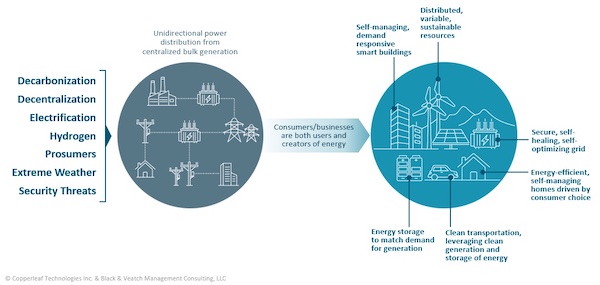
Grid modernization is accelerating due to multiple factors, such as decarbonization, electrification, extreme weather, and security threats.
Valuing innovative projects
The changing demands dictated by grid modernization will require organizations to strike the right balance between cost-effectively managing the current business, while investing appropriately to meet future demands. Organizations are already seeing an increase in both the volume and variety of grid modernization projects. This is leading to increased planning complexity, requiring utilities to demonstrate that they are spending their limited budgets and resources to maximize value and drive their ESG and performance targets.
A value-based approach to investment decision making is key to establishing a common basis to evaluate potential investment opportunities and meet the challenges of grid modernization. The key to achieving your organization’s grid modernization goals is building a multi-year plan that breaks the work into executable chunks. This ensures adequate funding and resources are available to carry out the plan in the short-term, resulting in incremental progress toward longer-term objectives.
With a value-based decision-making approach, organizations can ensure they are making the right grid modernization investments—and justify their plans to internal and external stakeholders.
Align decisions with strategic objectives
Business leaders must develop frameworks that quantify the financial and non-financial benefits of all proposed investments on a common scale and understand how projects will contribute to their short- and long-term grid modernization initiatives and broader energy transition goals. A value framework also creates a clear line of sight from planned investments to regulatory and corporate targets, allowing organizations to provide transparency into the decision-making methodology—and demonstrate the benefits of their plans to regulators, stakeholders, and customers:
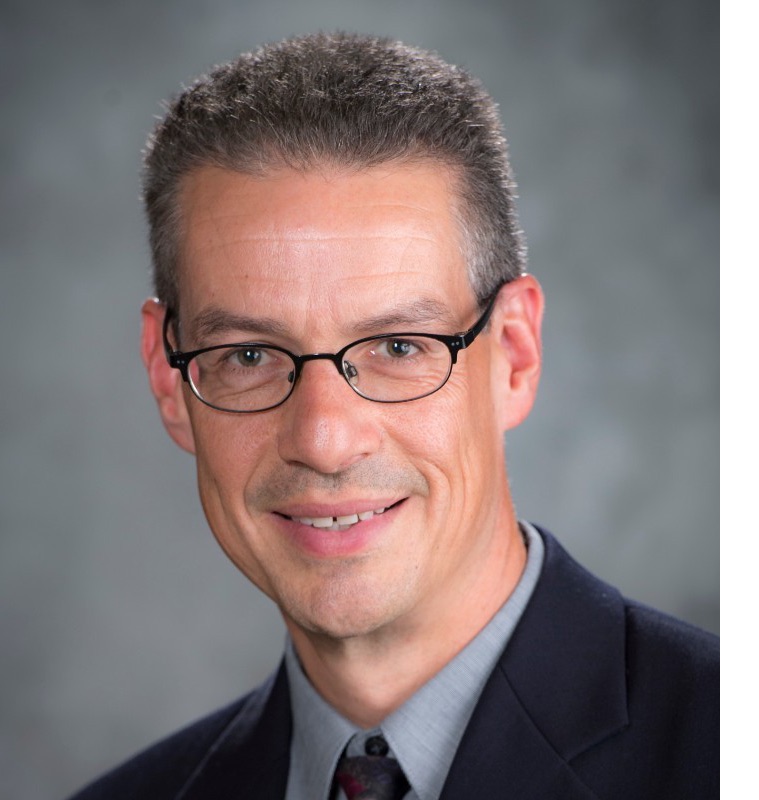 Russ is a Director of Product Management, Decision Analytics at Copperleaf. He is an innovative leader with over 20 years of comprehensive business and technical experience in high-tech product development organizations. Russ holds a B.A.Sc. in Mechanical Engineering from the University of British Columbia and a Management of Technology MBA from Simon Fraser University.
Russ is a Director of Product Management, Decision Analytics at Copperleaf. He is an innovative leader with over 20 years of comprehensive business and technical experience in high-tech product development organizations. Russ holds a B.A.Sc. in Mechanical Engineering from the University of British Columbia and a Management of Technology MBA from Simon Fraser University.
Copperleaf | www.copperleaf.com
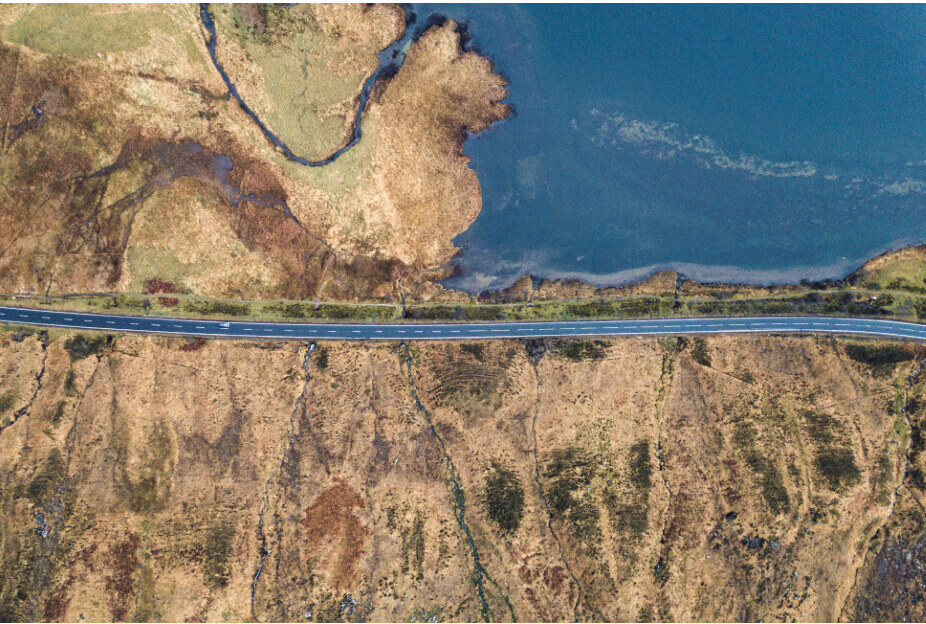
What’s underneath the surface of the land that you plan to develop and who owns it? Identifying owners of mineral rights is critical for utility-scale solar energy projects, especially in regions where these rights are legally separable from surfac....

Since the passage of the Inflation Reduction Act nearly two years ago, U.S. solar panel makers navigate a promising market amid production, legal, and investment considerations Nearly two years after U.S. President Joe Biden signed the Inflation R....
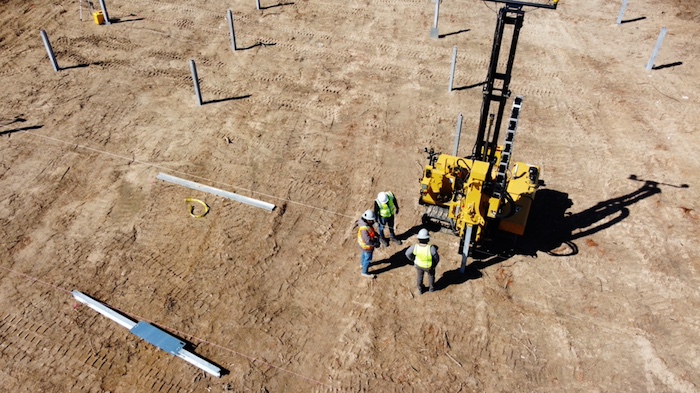
The global shift towards clean energy — exemplified by the widespread adoption of solar power — is not only a beacon of hope for a sustainable future, but also comes with heightened expectations for responsible project execution. From the initial....
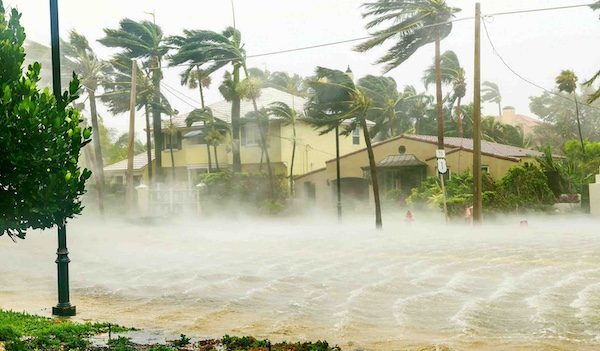
The impacts of climate change are becoming increasingly more apparent as communities around the world experience extreme weather events. From hurricanes and floods to droughts and wildfires, these types of events can have profound negatives effects o....
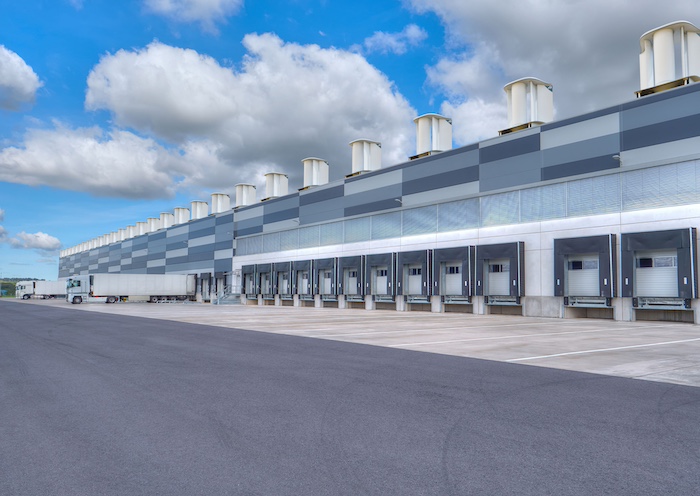
When thinking of renewable energy sources, you most likely picture solar panels or massive wind turbines, churning out energy to reduce the strain on electric grids and helping towns and businesses meet lofty sustainability goals. However, when an ex....

The US offshore wind sector has entered 2024 with cautious optimism as the industry shakes off negativity from last year, ready to apply learnings from a challenging 2023 to the year ahead. There are already key projects in the pipeline, including th....

As the world accelerates its transition to renewable energy sources, the deployment of energy storage solutions has surged to meet the demands of this ongoing transformation. Battery Energy Storage System (BESS) capacity is likely to quintuple betwee....

On April 19, 2019, a thermal runaway event took place in a battery energy storage unit (ESS) located within a building in Surprise, Arizona. The ESS was provided with fire detection and fire suppression, which both activated. Approximately five hours....
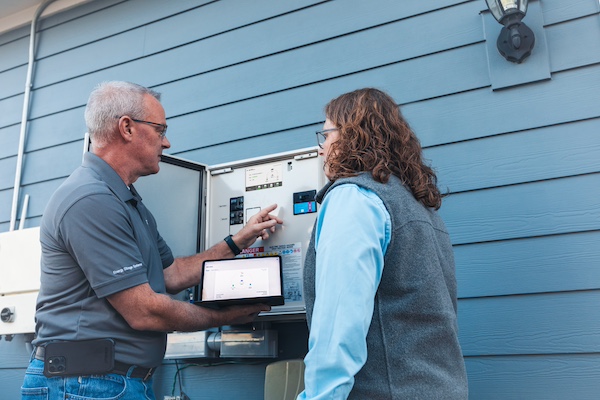
The summer of 2023 was the hottest in recorded history, hitting the United States with disproportionate force. A climatology report by PBS explained that the terrain in and surrounding the U.S. contributes to powerful competing air masses t....
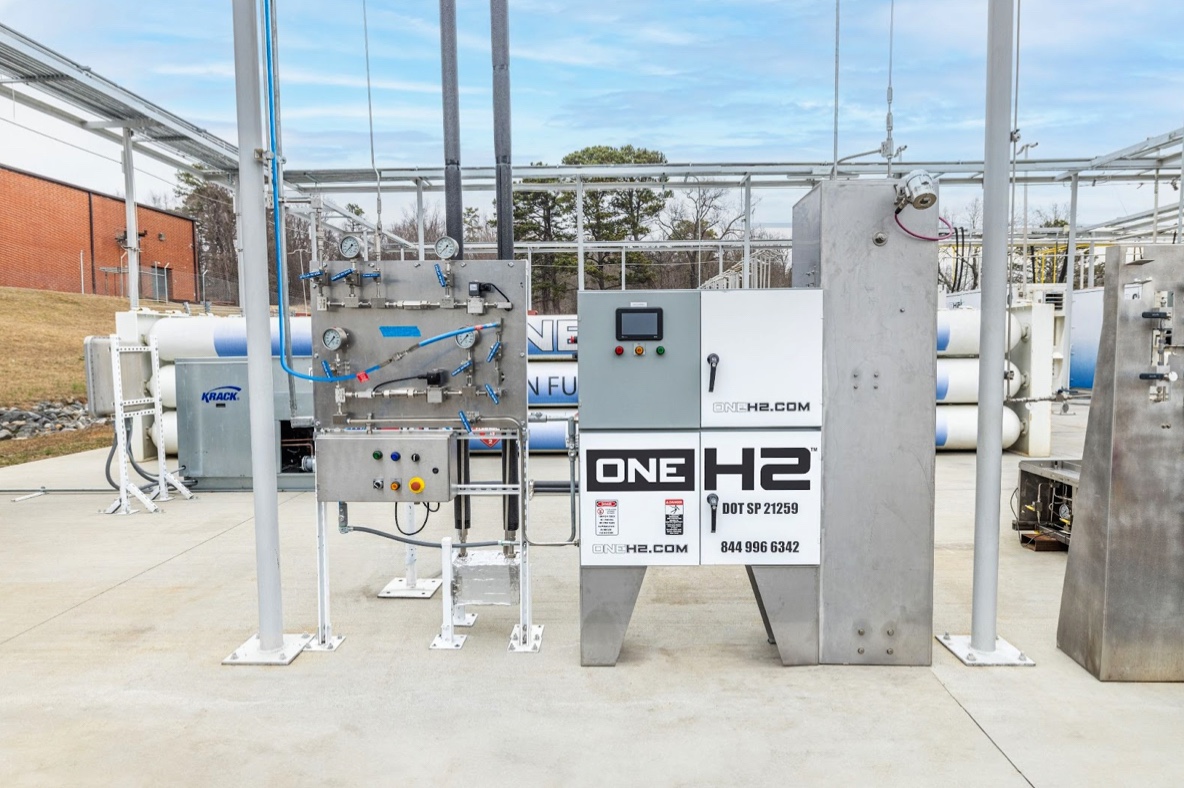
As industrial operations look for opportunities to decrease their carbon emissions, hydrogen fuel cell vehicles and battery-electric vehicles have emerged as potential solutions. These power options generate zero carbon emissions at the tai....

In the last five years, North America has experienced a significant increase in severe weather events that have impacted power grids. In Canada, Alberta's electric system operator issued 17 provincial grid alerts since 2021, due to extreme weather co....

Now more than ever, it would be difficult to overstate the importance of the renewable energy industry. Indeed, it seems that few other industries depend as heavily on constant and rapid innovation. This industry, however, is somewhat unique in its e....